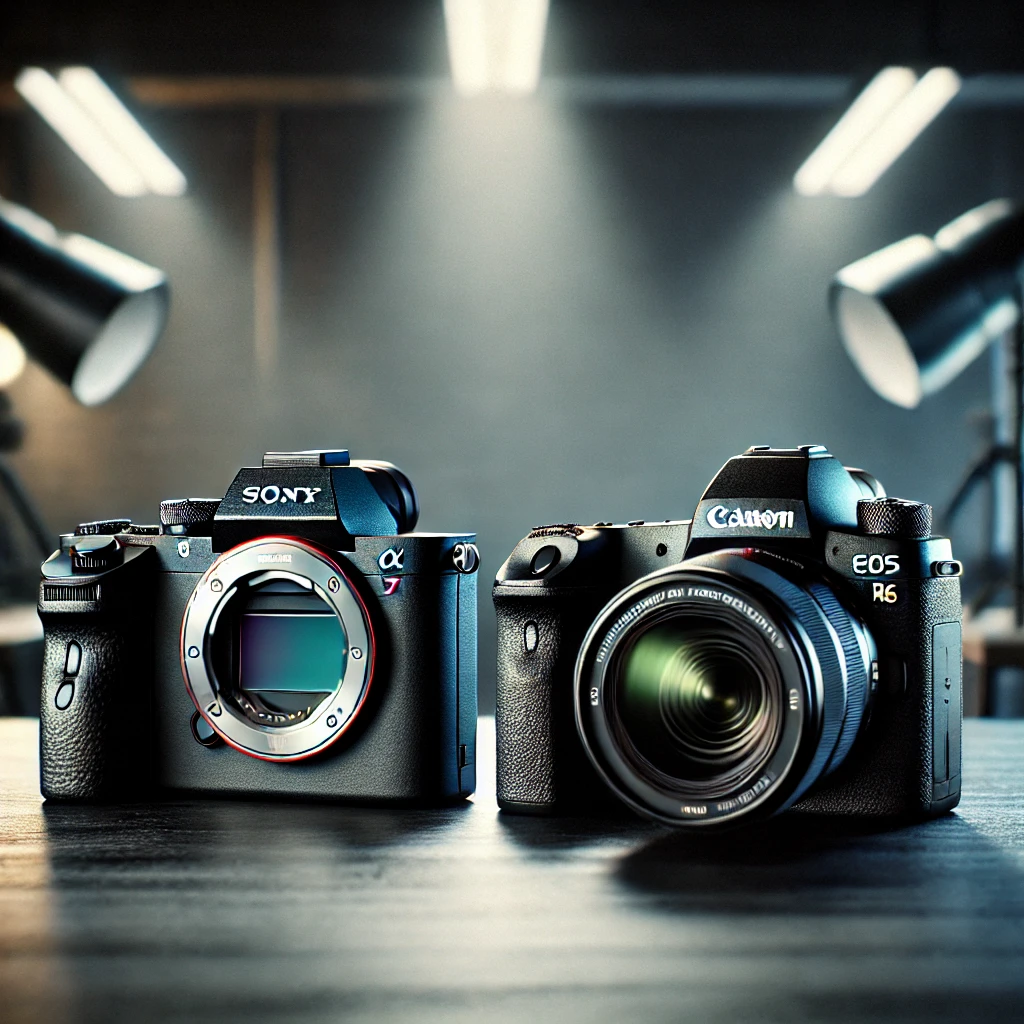Sony Alpha 7 IV vs. Canon EOS R6 Mark II: Which Camera Reigns Supreme in 2024?
Photography enthusiasts and professionals often find themselves torn between the Sony Alpha 7 IV and the Canon EOS R6 Mark II—two top-tier full-frame cameras that have dominated the market in 2024. This article dives into the key features, strengths, and differences between these two powerhouse models to help you decide which suits your needs best.
1. General Features Comparison
| Feature | Sony Alpha 7 IV | Canon EOS R6 Mark II |
|---|---|---|
| Sensor | 33 MP Full-Frame CMOS | 24.2 MP Full-Frame CMOS |
| Image Processor | BIONZ XR | DIGIC X |
| ISO Range | 100-51,200 (Expandable 50-204,800) | 100-102,400 (Expandable 50-204,800) |
| Video Capability | 4K 60fps (10-bit 4:2:2) | 4K 60fps (Oversampled from 6K, 10-bit 4:2:2) |
| Autofocus System | 759 Phase Detection Points | Dual Pixel CMOS AF II |
| In-Body Stabilization | 5.5 Stops | 8 Stops |
| Screen | 3″ Vari-angle LCD Touchscreen | 3″ Vari-angle LCD Touchscreen |
| Weight | 658g | 680g |
2. Key Advantages
Sony Alpha 7 IV
- Higher Resolution Sensor: The 33 MP sensor captures more detail, making it ideal for landscape and studio photography.
- Video Focused Features: Advanced 4K capabilities with 10-bit color deliver cinematic-quality videos.
- Wide Autofocus Coverage: 759 phase-detection points ensure superior subject tracking, even for fast-moving subjects.
- E-Mount Ecosystem: Sony’s extensive lineup of lenses provides unmatched flexibility.
Canon EOS R6 Mark II
- Better Low-Light Performance: With a lower megapixel count, the R6 Mark II excels in low-light conditions, reducing noise at high ISO settings.
- Superior In-Body Stabilization: 8 stops of IBIS make it perfect for handheld photography and videography.
- Dual Pixel Autofocus: Canon’s renowned Dual Pixel AF II system offers smooth and accurate focusing, particularly useful for video creators.
- Oversampled 4K Video: Produces sharper and more detailed footage by downscaling from 6K.
3. Who Should Buy These Cameras?
Sony Alpha 7 IV
- Best For: Professional photographers and hybrid shooters who prioritize resolution and video quality.
- Ideal Uses: Landscape photography, weddings, and videography requiring rich detail and vibrant color.
Canon EOS R6 Mark II
- Best For: Event photographers and content creators who need excellent low-light performance and stabilization.
- Ideal Uses: Sports, wildlife photography, vlogging, and run-and-gun videography.
4. Pricing and Value
- Sony Alpha 7 IV: ~$2,500 (body only)
- Canon EOS R6 Mark II: ~$2,400 (body only)
While both cameras are in a similar price range, your choice depends on whether you prioritize resolution and lens options (Sony) or low-light capabilities and stabilization (Canon).
Conclusion
Both the Sony Alpha 7 IV and the Canon EOS R6 Mark II are outstanding cameras that cater to different needs. If you’re a hybrid shooter looking for higher resolution and advanced video features, the Sony Alpha 7 IV might be your ideal choice. On the other hand, if you’re a photographer or videographer focused on low-light performance and in-body stabilization, the Canon EOS R6 Mark II stands out.
Which camera will you choose for your next project? Let us know in the comments below!
Sony Alpha 7 IV vs. Canon EOS R6 Mark II: Which Camera Reigns Supreme in 2024?


